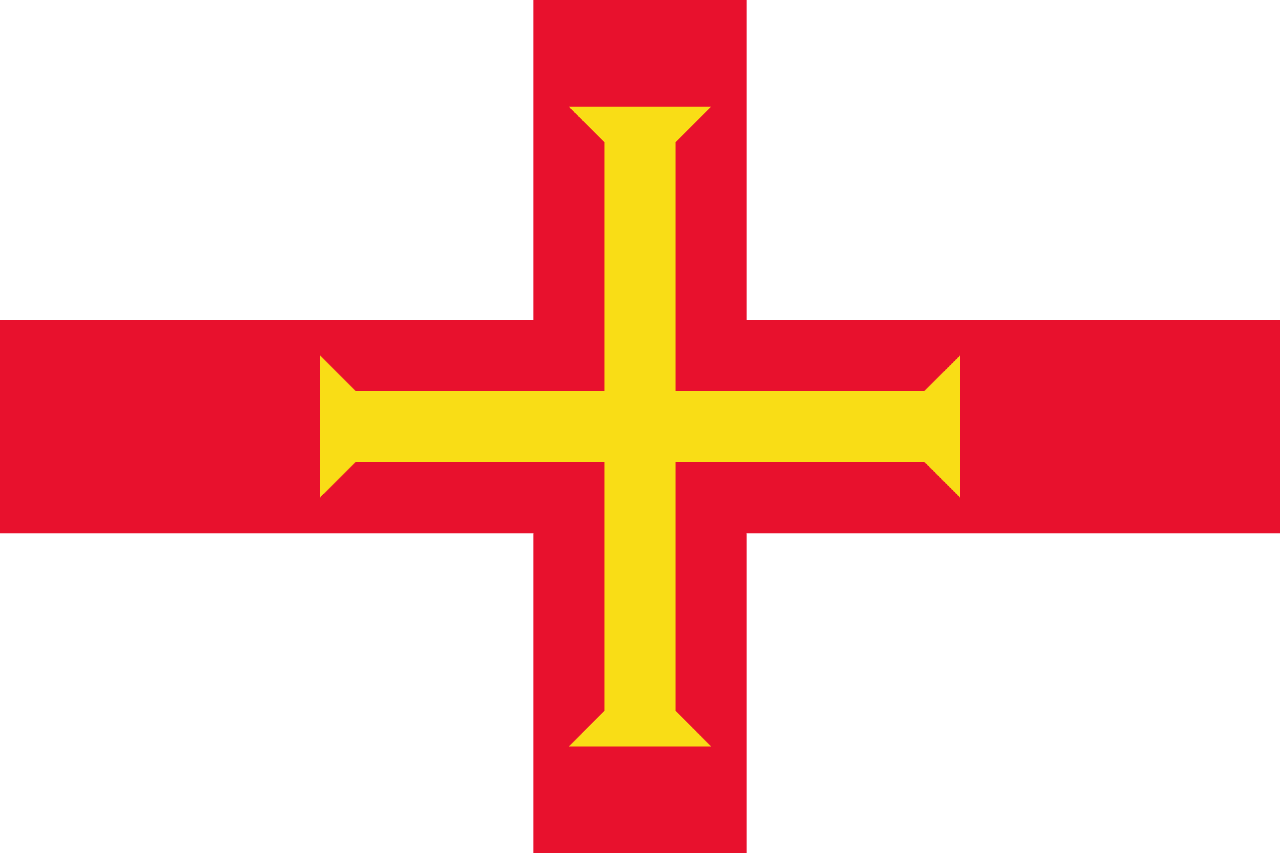La bandera de Guam consiste en un campo azul oscuro con un borde rojo y el sello de Guam en el centro. El sello muestra una proa (una canoa tradicional) y un cocotero en una playa, con la palabra "Guam" en letras rojas. Este diseño distintivo encapsula la rica herencia cultural de Guam, su belleza natural y su estatus único como un territorio no incorporado de los Estados Unidos.
Información sobre Guam
| Día Nacional de la Bandera | — |
| Estado soberano | No |
| Nombre oficial | Guam |
| Capital | Hagåtña |
| Población | 164,583 |
| Área | 549 km² |
| Moneda | Dólar estadounidense (USD) |
| Idioma | Chamorro, Inglés |
| Continente | Oceanía |
| Región | Micronesia |
| Subregión | — |
| Fronteras | — |
| Zona horaria | Hora de Chamorro (ChT) UTC+10 |
| Código de llamada | +1-671 |
| Dominio de nivel superior | .gu |
Historia de la bandera de Guam
 La bandera de Guam fue adoptada oficialmente el 9 de febrero de 1948. Su creación fue parte de un movimiento más amplio para establecer símbolos de identidad guameña en los años posteriores a la Segunda Guerra Mundial. El diseño de la bandera fue el resultado de un concurso local, con la entrada ganadora presentada por Helen L. Paul, una empleada de la Marina de los EE. UU. en Guam.
La bandera de Guam fue adoptada oficialmente el 9 de febrero de 1948. Su creación fue parte de un movimiento más amplio para establecer símbolos de identidad guameña en los años posteriores a la Segunda Guerra Mundial. El diseño de la bandera fue el resultado de un concurso local, con la entrada ganadora presentada por Helen L. Paul, una empleada de la Marina de los EE. UU. en Guam.
La adopción de la bandera se produjo en un momento significativo en la historia de Guam, ya que la isla estaba en transición de la administración naval a la civil y su gente buscaba un mayor reconocimiento de su identidad cultural única dentro del marco político estadounidense.
Simbolismo y diseño de la bandera de Guam
La bandera de Guam está llena de simbolismo, con cada elemento cuidadosamente elegido para representar diferentes aspectos de la identidad e historia de Guam:
- Campo Azul Oscuro: Representa el Océano Pacífico, enfatizando la naturaleza insular de Guam y su profunda conexión con el mar.
- Borde Rojo: Simboliza la sangre derramada por el pueblo Chamorro a lo largo de la historia de Guam, particularmente durante la Segunda Guerra Mundial. También representa el coraje y la resiliencia del pueblo guameño.
- Sello de Guam: El elemento central de la bandera, que contiene varios componentes simbólicos:
- Una proa: Una canoa tradicional Chamorro, que representa la cultura marítima de Guam y sus antiguas tradiciones marítimas.
- Un cocotero: Simboliza el entorno tropical de Guam y la importancia de la agricultura para la cultura y la economía de la isla.
- Una playa: Representa la hermosa costa de Guam y su importancia para el estilo de vida de la isla.
- "GUAM" en letras rojas: Afirma la identidad de Guam y destaca su nombre de manera prominente dentro del sello.
Uso y significado de la bandera de Guam
 La bandera de Guam sirve como un poderoso símbolo de la herencia Chamorro, el orgullo cultural y la identidad política. Se exhibe con orgullo en edificios gubernamentales, durante ceremonias oficiales y en eventos culturales. La bandera juega un papel significativo en la afirmación del lugar único de Guam dentro de los Estados Unidos y su legado cultural e histórico distintivo.
La bandera de Guam sirve como un poderoso símbolo de la herencia Chamorro, el orgullo cultural y la identidad política. Se exhibe con orgullo en edificios gubernamentales, durante ceremonias oficiales y en eventos culturales. La bandera juega un papel significativo en la afirmación del lugar único de Guam dentro de los Estados Unidos y su legado cultural e histórico distintivo.
En la cultura guameña, la bandera es una fuente de orgullo y unidad, y a menudo se presenta de manera prominente durante las celebraciones del Día de la Liberación el 21 de julio, que conmemora la liberación de Guam de la ocupación japonesa durante la Segunda Guerra Mundial.
Datos interesantes sobre la bandera de Guam y Guam
- Guam es un territorio no incorporado de los Estados Unidos, con una rica herencia cultural influenciada por el pueblo indígena Chamorro, la colonización española y la administración estadounidense.
- El diseño de la bandera refleja intrincadamente la cultura Chamorro de Guam, enfatizando temas de tradiciones marítimas, belleza natural y resiliencia frente a desafíos históricos.
- Guam a menudo se llama la "Punta de la Lanza" debido a su importancia militar estratégica en el Pacífico Occidental.
- La isla alberga algunas de las aves más raras del mundo, incluyendo el riel de Guam, que ha sido rescatado de la extinción en la naturaleza a través de esfuerzos de conservación.
- El idioma Chamorro de Guam, una lengua austronesia, es una de las más antiguas del Pacífico y se están realizando esfuerzos para preservarla y revitalizarla.
- La isla juega un papel significativo en la estrategia de defensa de los EE. UU. y alberga varias bases militares importantes.
La bandera de Guam se erige como un poderoso emblema de la identidad guameña, combinando elementos de la cultura Chamorro, la belleza natural y el estatus político único de la isla. Sirve como un recordatorio constante de la rica historia de Guam, su resiliencia y su continuo viaje dentro del marco político estadounidense.





